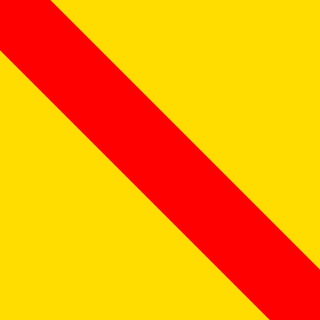 W
WThe Upper Rhine is the section of the Rhine in the Upper Rhine Plain between Basel in Switzerland and Bingen in Germany. The river is marked by Rhine-kilometres 170 to 529.
 W
WThe Belchen System refers to five mountains with the name Belchen around the tripoint of Germany, France and Switzerland that may have been used by the Celts as a solar calendar. The term is an extension of the Belchen Triangle.
 W
WThe Bundesstraße 9 is a German federal highway. It follows the left side of the Rhine from the Dutch border at Kranenburg upstream to the French border near the city of Lauterbourg, where it connects to the French A35 autoroute. The origins of the road can be traced back to Ancient Rome.
 W
WThe foothill zone of the Upper Rhine Plain is the hill country in front of the mountains either side of the Upper Rhine Plain, especially those in front of the Black Forest, Vosges and Palatinate Forest. When the rift valley sank the foothills on the flanks of the mountain ranges were left hanging as fault blocks. The strata of the platform have been preserved in this zone, whereas they have been eroded from the neighbouring higher blocks. They are usually covered by a layer of loess and offer good conditions for agricultural use. For example, in Baden, the Alsace and the Palatinate intensive orchard and vineyard cultivation is practised in the foothill zone.
 W
WThee Ingelheimer Aue is a previous Rhine island, located on the left bank of the river by the city of Mainz, between 500 and 503,5 km from the river mouth. It forms the northernmost point of the city division Mainz-Neustadt and is used for commercial purposes.
 W
WThe Margraviate of Baden was a historical territory of the Holy Roman Empire. Spread along the east side of the Upper Rhine River in southwestern Germany, it was named a margraviate in 1112 and existed until 1535, when it was split into the two margraviates of Baden-Durlach and Baden-Baden. The two parts were reunited in 1771 under Margrave Charles Frederick. The restored Margraviate of Baden was elevated to the status of electorate in 1803. In 1806, the Electorate of Baden, receiving territorial additions, became the Grand Duchy of Baden. The rulers of Baden, known as the House of Baden, were a cadet line of the Swabian House of Zähringen.
 W
WThe Rheingau consists of the district on the Northern side of the Rhine between the German towns of Wiesbaden and Lorch near Frankfurt, reaching from the Western Taunus to the Rhine. It is situated in the German state of Hesse and is part of the Rheingau-Taunus-Kreis administrative district. It is famous for Rheingau wines, especially the "Rheingauer Riesling," and its many taverns.
 W
WThe Sandoz chemical spill was a major environmental disaster caused by a fire and its subsequent extinguishing at Sandoz agrochemical storehouse in the Schweizerhalle industrial complex, Basel-Landschaft, Switzerland, on 1 November 1986, which released toxic agrochemicals into the air and resulted in tons of pollutants entering the Rhine river, turning it red.
 W
WThe Eurodistrict Strasbourg-Ortenau is a Franco-German eurodistrict, a cross-border administrative entity sharing common institutions, established on 17 October 2005 and definitely functional since 4 February 2010. The district is formed by the Eurométropole de Strasbourg and 3 other urban communities in the Grand Est region on the French side of the Rhine and the Ortenau district in the Baden-Württemberg region on the German side. The population of the district is 958,421 as of 2019, and it covers an area of 2,468 km2 (953 sq mi) Building on regional and Franco-German cooperation, it aims to develop bonds between citizens, associations, public administrations, educational establishments and corporations. It is also in the context of European integration, with the presence of European institutions in Strasbourg, and has been compared to a European version of Washington D.C..
 W
WThe Upper Rhenish Circle was an Imperial Circle of the Holy Roman Empire established in 1500 on the territory of the former Duchy of Upper Lorraine and large parts of Rhenish Franconia including the Swabian Alsace region and the Burgundian duchy of Savoy.